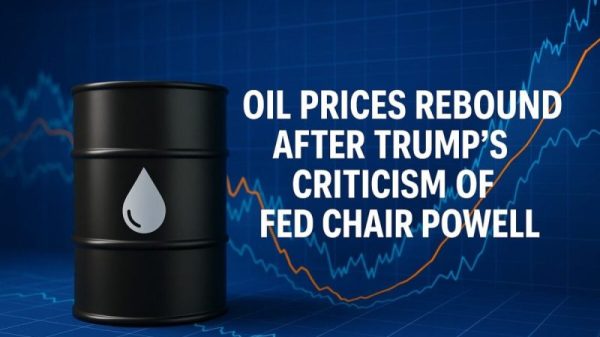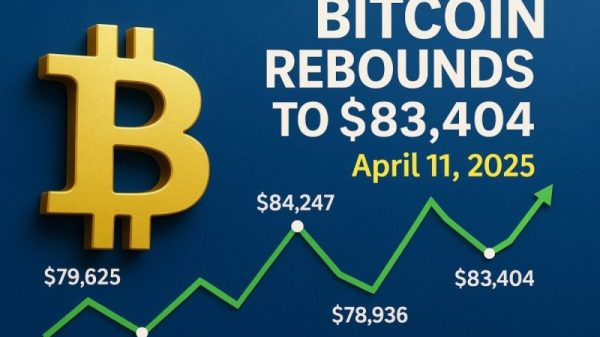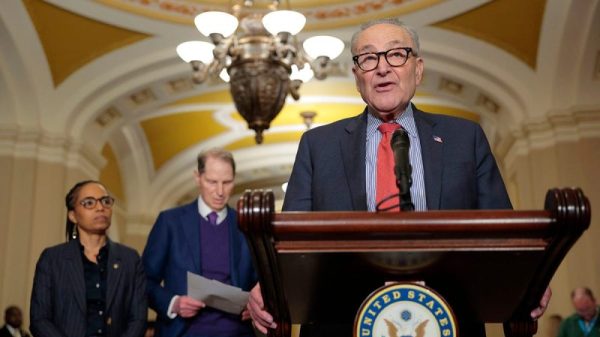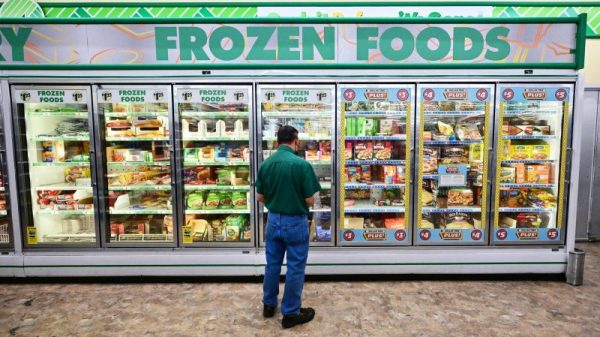We’ll go through exactly what a covered call is, how it can be used, the risks and a few variations to mitigate these risk.
(We’ve also just published a post on choosing great stocks with which to trade covered calls: Best Stocks To Write Covered Calls)
What Is A Covered Call?
A covered call comprises purchased shares and the sale of a call option with the shares as the underlying. Let’s illustrate this with an example:
Suppose you bought 100 Apple(AAPL) shares at $430 each, a total of $43,000, in April. And then sold a AAPL 450 May call option for $10, or $1000 in total. You would then have paid a net $42,000.
So what happen for various expiry AAPL prices? Well if AAPL is less than $450 on expiry the call option would expire worthless and you’d be $10 a share better off than if you’d done nothing.
If the share price is above $450, however, the call option purchaser will exercise the option and your 100 shares will be ‘called away’. Suppose, for example, that AAPL has risen to $470.
Because you have sold a call option giving the purchaser the right to purchase shares at $450 you will, in effect, be forced to sell your shares at $450, rather than the $470 you could get in the open market.
You have therefore forgone the $20/share of profit you could have made (ignoring any premium you received originally) if you hadn’t sold the option.
Notice that in this scenario you’ve still made a decent profit. You have bought shares at $430, received $10 in premium from the sold call option, and then sold them at $450; a nice $30 total profit. It’s just not as much as you would have made if you’d simply bought the shares and sold them for $470 (ie $40).
Monthly ‘Income’ From Covered Calls
This trade off, foregoing large profits for premium received even if the shares don’t do well, is attractive to many investors.
Indeed most popular options trade is probably the sale of call options for premium on shares already held, or purchased with a view to the long term.
Let’s say you own 100 Apple shares and sell call options $20 above the current share price every month.
You’d receive $10 a month premium unless Apple rose over $20 in value when you’d be forced to sell your shares, but at a nice profit.
This seems like a heads I win, tails you lose proposition, and is certainly presented as such by many of the covered call option advisory services out there. Indeed covered calls are usually presented as a low risk options strategy.
However, as we’ll see later, this is not quite true. There are significant risks that need to be managed for the strategy to be successful.
What Could Go Wrong With The Covered Call Strategy?
Risk
And so what’s the catch? Are covered calls really low risk? Let’s look at a the Profit & Loss diagram for this trade:
P&L: Covered Call
Do you recognize the shape? It is exactly the same as a sold $450 put option. And because the P&L graphs are the same, it is exactly the same trade.
This is a good example of the ‘synthetic’ options phenomenon: often the combinations of shares and/or options can be used to ‘synthetically’ create another options position. In this case 100 AAPL shares combined with the sale of a $450 call is exactly the same as just selling a $450 AAPL put option.
Now, if I asked you whether you’d be willing to sell an uncovered put option what would be your answer? Well, hopefully, you’d be very concerned about the risk. Any uncovered options sale is inherently risky as it produces unlimited (or close to it) downside should the trade go against you.
The sale of a $450 put option expiring in 30-40 days would net you approx. $30 in premium.
However you could, theoretically, lose up to $450 should AAPL fall.
So do you still think covered calls are low risk? Hopefully I’ve convinced you that unmanaged they are actually very risky indeed.
Volatility
Before we look at ways of managing this risk, let’s look at implied volatility. No options trade should be evaluated without considering volatility but, in this case, it is less important than usual.
Investors usually hold sold calls to expiry and either just sell next month’s (if this month’s expired worthless) or give up their shares (at a nice profit) and then set up a new position (buy shares and sell next month’s option).
However volatility does affect the value of the trade during the month and so would affect the ‘buy back’ price should the investor wish to close the trade before expiry.
Risk Management
So how do you manage the risk of the trade?
Well, that’s the subject of the next section.
Covered Calls Risk Management
Recap
Previously, we’ve learnt what a covered call is, how it can be used and how it is, unmanaged, riskier than many people think. Let’s complete our covered call considerations, therefore, by looking at some risk management techniques:
Here are the key ways risk can be managed.
Stop loss
The first thing you could do is set a stop loss. Should your stock fall sufficiently to produce a 20% (say) fall in value, close the trade.
This has the advantage of being simple, and possibly automated depending on which broker you use. It also removes 80% of the risk.
Like all stop loss systems it could however produce losses needlessly. If your stock were to recover you’d have taken a 20% loss when, potentially, you’d need not do so. There’s nothing more annoying than being stopped out of a trade only to see it reverse into profitability.
Sell in the money call options
The above example, and the most common practiced covered call strategy, is to sell out of the money calls; $20 out of the money in our example.
An alternative is to sell in the money calls. Let’s say you were to buy AAPL at $430 and then sell a $410 call option instead of $450. You’d receive approx. $30.
In this strategy you would expect the shares to be called away most of the time (ie if AAPL expires above $410) for a ‘loss’ of $20. But you’ve received $30 and so have made a much lower risk $10 profit. Indeed the stock would have to fall to $400 for a loss to be made.
What you’ve forgone is any upside on the shares themselves. But many investors would be prepared to do this for a (in this case) 2% monthly gain.
Rolling down
Let’s say you’ve put on the above out of the money covered call (ie bought shares and sold a $450 call option) but the stock has fallen from $430 to $410.
Your sold $450 call is now, probably, worth very little ($2 say). You could take the opportunity to buy back this option and sell a $430 option (for $8 say) netting an extra $6 a share for the month.
The danger is, of course, that AAPL recovers back to over $430 and you are forced to sell at $430 rather than the potential profit up to $450.
Rolling Out
You could roll out instead of rolling down. So, in the above example, instead of rolling down from a May $450 call to a May $430, you instead roll to a Jun $450 call. This allows you to preserve the $450 strike price for your calls.
Dividend
This is a favourite tactic of mine: choose a stock with a dividend payable before options expiry (or more accurately: when the record date is before expiry). This adds to the income from the trade.
In theory the dividend should be priced into the call price – i.e. the call premium received is less – but I’ve found that often this isn’t exactly the case.
Covered Calls: Trade Plan
Let’s put everything we’ve learnt together and set out the full game plan for trading covered calls, the Epsilon Options way…
Step 1: Choose An Underlying
Choose a ‘boring’ stock with a dividend due within the next 2 months. The stock should be priced above $50 and have a historical volatility less than 25%. It should have an annual yield above 1.5% (2% is even better)
Stocks such as Walmart(WMT), IBM(IBM), Union Pacific(UNP etc are great.
Step 2: Buy 100 shares
Buy 100 shares (or multiples of 100 if you have a larger budget) in this underlying.
Step 3: Sell In-The-Money Call Option
At the same time sell a 1 call options contract per 100 shares bought.
Now for the tricky bit: The strike price for this call option should be the first strike in the money and be the first expiry after the dividend record date:
Let’s illustrate with an example:
IBM is $187 in October 2013
Its next dividend’s record date is 10 November 2013.
The strike price of the sold call is 2 strike prices below the $187. IBM options are in $5 increments ($180, $185, $190, $195 etc) and so the 1st strike price in the money (ie below $187) is $185.
The first options expiry date after the dividend is the November 2013 option.
Therefore we’d sell the Nov13 185 call option.
Tip: It’s best to put steps 2 and 3 on at the same time. This is called a ‘buy-write’; your broker should be able to help you with this.
Set Up Your Exit Plan
Remove the position if at anytime you have made a 20% loss
Remove the position if at anytime you make a 25-30% profit (a bit of wiggle room here: you can make your choice)
That’s it!
The aim is to do lots of these over the course of a year and make a few percent on each trade.
This should outweigh any 20% you may make along the way.
Unlike many options trades we should expect to hold most of these trades to expiry when the shares are called away (ie sold) at the strike price.
(NB We cover two alternatives to the traditional covered call:
The synthetic covered call here >>> The Synthetic Covered Call Options Strategy Explained
and The Covered Call LEAP >>> Covered Call LEAPs | Using Long Dated Options In A Covered Call Write )
Conclusion
We’ve seen from the three courses on covered calls that they can be used to obtain a small, but reliable income every month of 2-3%. This may be seen to be pretty small, but it’s repeatable and most investors would love to be able to bank annualized 40%+ gains.
This return comes at a significant risk, however, if unmanaged. Thankfully, there are several methods available to manage that risk, as we have seen.
The Epsilon Options covered calls method utilizes these methods (but not rolling down for the reasons suggested above).
About the Author: Chris Young has a mathematics degree and 18 years finance experience. Chris is British by background but has worked in the US and lately in Australia. His interest in options was first aroused by the ‘Trading Options’ section of the Financial Times (of London). He decided to bring this knowledge to a wider audience and founded Epsilon Options in 2012.
Related articles:
The Synthetic Covered Call Options Strategy Explained
In The Money (ITM) Options Explained
Out Of The Money (OTM) Options Explained
Uncovering The Covered Call
Covered Calls –Does Rolling Forward Mean Higher Risk?
Leverage With A Poor Man’s Covered Call
2 Tweaks To Covered Calls And Naked Calls
Dangers Of The Covered Call
Exercise Risk Of Uncovered Calls






































